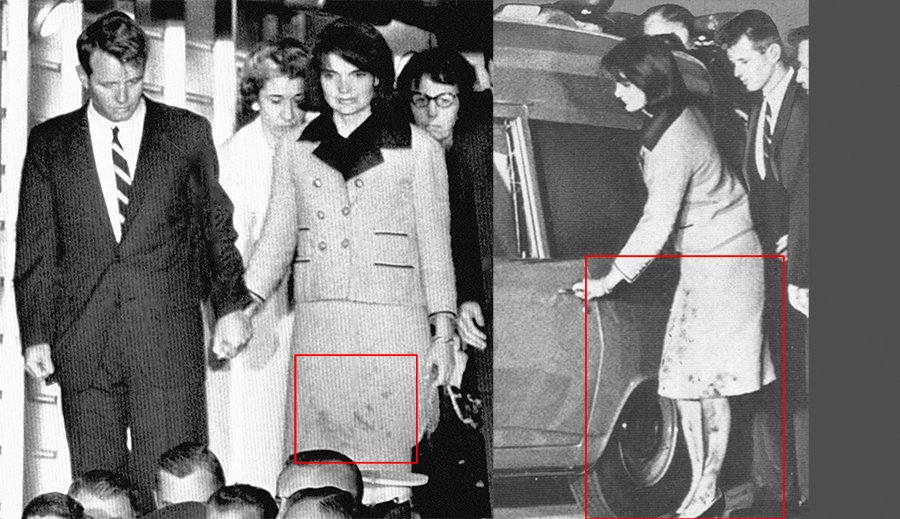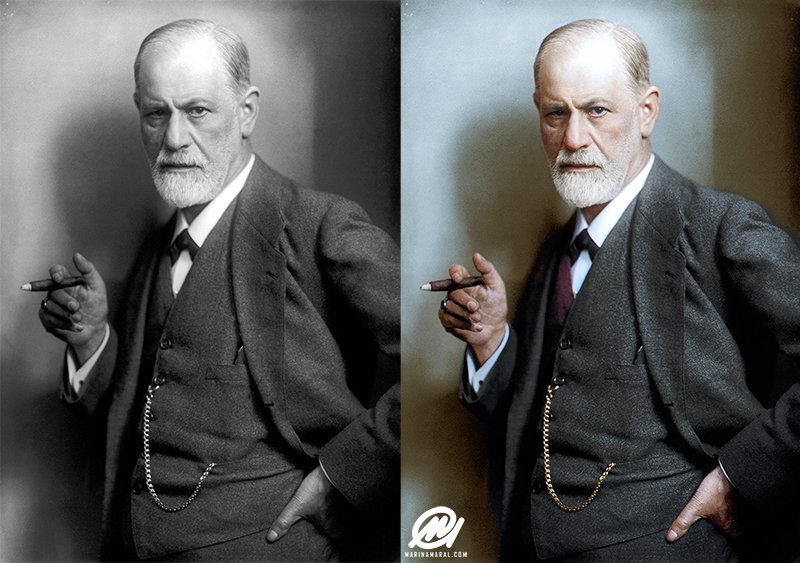Jacqueline Lee Kennedy Onassis was born #OnThisDay 1929.
She was the wife of the 35th President of the United States, John F. Kennedy, and the First Lady of the United States from 1961 until his assassination in 1963.
She was the wife of the 35th President of the United States, John F. Kennedy, and the First Lady of the United States from 1961 until his assassination in 1963.
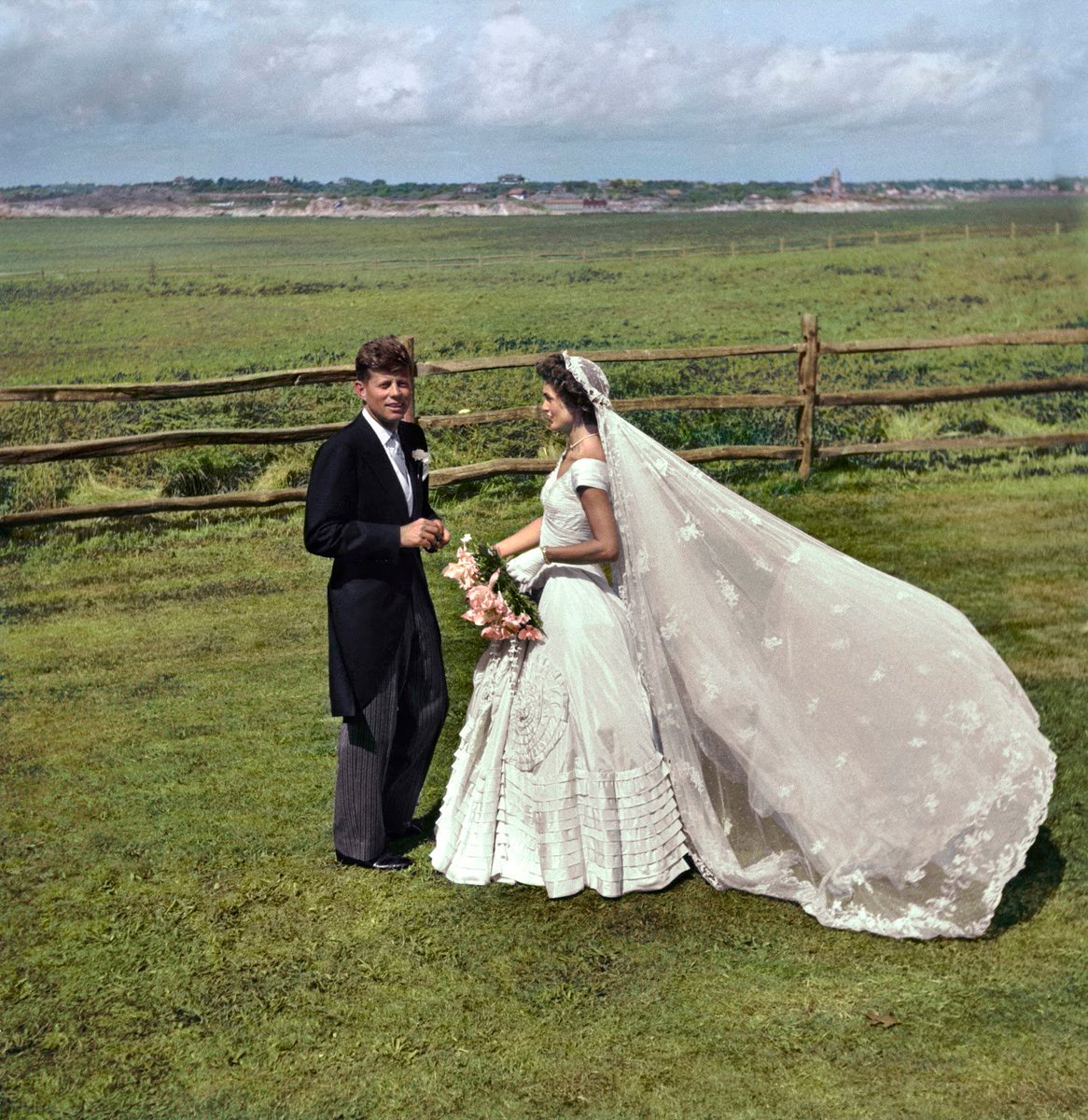
Bouvier was the elder daughter of Wall Street stockbroker John Vernou Bouvier III and socialite Janet Lee Bouvier. 

Jackie spent her early childhood years in Manhattan and at Lasata, the Bouviers' country estate in East Hampton on Long Island. She idolized her father, who likewise favored her over her sister, calling his elder child "the most beautiful daughter a man ever had". 

From an early age, Bouvier was an enthusiastic equestrienne and successfully competed in the sport; horse-riding would remain a lifelong passion. She also took ballet lessons, was an avid reader, and excelled at learning languages.
The marriage of Bouvier's parents was strained by her father's alcoholism and extramarital affairs; the family had also struggled with financial difficulties following the Wall Street Crash of 1929. They separated in 1936 and divorced four years later. 

She had made her society debut in the summer before entering college (1947) and became a frequent presence in New York social functions. 

Bouvier spent her junior year (1949–1950) in France. Upon returning home, she transferred to George Washington University in Washington, D.C., graduating with a Bachelor of Arts degree in French literature in 1951. 

While attending George Washington, Bouvier won a 12-month junior editorship at Vogue magazine. She had been selected over several hundred other women nationwide.
The position entailed working for six months in the magazine's New York City office and spending the remaining six months in Paris.
On her first day at Vogue, the managing editor advised her to quit and go back to Washington. According to biographer Barbara Leaming, the editor was concerned about Jackie's marriage prospects;
She was 22 years of age and was considered too old to be single in her social circles. Jackie left the job and returned to Washington after only one day of work. She then moved back to Merrywood and was hired as a part-time receptionist at the Washington Times-Herald.
A week later, Jackie approached editor Frank Waldrop and requested more challenging work; she was given the position of "Inquiring Camera Girl", despite Waldrop's initial concerns about her competence.
The position required her to pose witty questions to individuals chosen at random on the street and take their pictures for publication in the newspaper alongside selected quotations from their responses. 

In addition to the random "man on the street" vignettes, she sometimes sought interviews with people of interest, such as six-year-old Tricia Nixon.
Jackie interviewed Tricia a few days after her father Richard Nixon was elected to the vice presidency in the 1952 election.
Jackie interviewed Tricia a few days after her father Richard Nixon was elected to the vice presidency in the 1952 election.
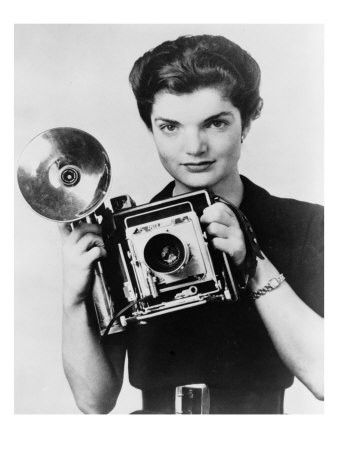
During this time, she was also briefly engaged to a young stockbroker, John G. W. Husted, Jr. After only a month of dating, the couple published the announcement in The New York Times in January 1952. 



Jackie called off the engagement after three months because she had found him "immature and boring" once she got to know him better.
Jackie and U.S. Representative John F. Kennedy belonged to the same social circle and were formally introduced by a mutual friend, journalist Charles L. Bartlett, at a dinner party in May 1952. Bouvier was attracted to Kennedy's physical appearance, charm, wit and wealth. 

The pair also shared the similarities of Catholicism, writing, enjoying reading and having previously lived abroad.
Kennedy was busy running for the U.S. Senate; the relationship grew more serious and he proposed to her after the November election.
Kennedy was busy running for the U.S. Senate; the relationship grew more serious and he proposed to her after the November election.

Jackie took some time to accept, because she had been assigned to cover the coronation of Queen Elizabeth II in London for The Washington Times-Herald.
After a month in Europe, she returned to the US and accepted Kennedy's marriage proposal.
After a month in Europe, she returned to the US and accepted Kennedy's marriage proposal.
She then resigned from her position at the newspaper.
Their engagement was officially announced on June 25, 1953.
Their engagement was officially announced on June 25, 1953.
Jackie and Kennedy were married on September 12, 1953, at St. Mary's Church in Newport, Rhode Island.
Her dress is one of the best-remembered bridal gowns of all time, which, it turns out, she hated.
Her dress is one of the best-remembered bridal gowns of all time, which, it turns out, she hated.

According to Time, the 24-year-old bride "already a tastemaker with a reputation for devil-may-care chic'" wanted an unfussy dress with sleek lines. Instead, she "bowed to family pressure to wear something more traditional, despite thinking it looked like a lampshade." 

A flood in Lowe's Lexington Avenue workshop 10 days before the wedding ruined the bride's gown and nine of the bridal-party's dresses.
The designer and her staff worked through eight days (the original time was eight weeks) to reconstruct the gowns and get them delivered on time. Instead of an estimated $700 profit, Lowe lost $2,200 on the project. 

Jackie later told friends privately that she didn't like the dress' portrait neckline because, she felt, it emphasized her small bust. 

The wedding was considered the social event of the season with an estimated 700 guests at the ceremony and 1200 at the reception that followed at Hammersmith Farm.
The wedding dress is now housed in the Kennedy Library in Boston, Massachusetts.
The wedding dress is now housed in the Kennedy Library in Boston, Massachusetts.

The newlyweds honeymooned in Acapulco, Mexico, before settling in their new home, Hickory Hill in McLean, Virginia, a suburb of Washington, D.C. 

In the early years of their marriage, the couple faced several personal setbacks.
Kennedy suffered from Addison's Disease and from chronic and at times debilitating back pain, which had been exacerbated by a war injury; in late 1954, he underwent a near-fatal spinal operation.
Kennedy suffered from Addison's Disease and from chronic and at times debilitating back pain, which had been exacerbated by a war injury; in late 1954, he underwent a near-fatal spinal operation.

Additionally, Jacqueline suffered a miscarriage in 1955 and in August 1956 gave birth to a stillborn daughter, Arabella. 
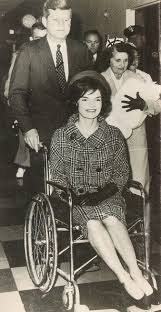
Jacqueline gave birth to a daughter Caroline on November 27, 1957.
At the time, she and John Kennedy were campaigning for his re-election to the Senate, and they posed with their infant daughter for the cover of the April 21, 1958 issue of Life Magazine.
At the time, she and John Kennedy were campaigning for his re-election to the Senate, and they posed with their infant daughter for the cover of the April 21, 1958 issue of Life Magazine.

Soon enough, John Kennedy started to notice the value that his wife added to his congressional campaign. Kenneth O'Donnell remembered that "the size of the crowd was twice as big" when she accompanied her husband; he also recalled her as "always cheerful and obliging". 

In November 1958, John Kennedy was reelected to a second term. He credited Jacqueline's visibility in both ads and stumping as vital assets in securing his victory, and he called her "simply invaluable".
On January 3, 1960, John F. Kennedy announced his candidacy for the presidency and launched his campaign nationwide. In the early months of the election year, Jacqueline Kennedy accompanied her husband to campaign events such as whistle-stops and dinners. 



Shortly after the campaign began, Jackie became pregnant and decided to stay at home. She subsequently participated in the campaign by writing a weekly syndicated newspaper column, Campaign Wife, answering correspondence, and giving interviews to the media.
On November 8, 1960, John F. Kennedy narrowly defeated Republican opponent Richard Nixon in the U.S. presidential election.
A little over two weeks later on November 25, Jacqueline gave birth to the couple's first son, John F. Kennedy, Jr.
A little over two weeks later on November 25, Jacqueline gave birth to the couple's first son, John F. Kennedy, Jr.

Jackie was the first presidential wife to hire a press secretary and carefully managed her contact with the media, usually shying away from making public statements, and strictly controlling the extent to which her children were photographed.
Although Jacqueline stated that her priority as a First Lady was to take care of the President and their children, she also dedicated her time to the promotion of American arts and preservation of its history.
The restoration of the White House was her main contribution, but she also furthered the cause by hosting social events that brought together elite figures from politics and the arts. 

Throughout her husband's presidency, Jackie made many official visits to other countries, on her own or with the President, more than any of the preceding First Ladies.
Before the Kennedy's first official visit to France in 1961, a TV special was shot in French with her on the White House lawn. After arriving in the country, she impressed the public with her ability to speak French, as well as her extensive knowledge of French history.
At the conclusion of the visit, Time magazine seemed delighted with the First Lady and noted, "There was also that fellow who came with her."
President Kennedy joked, "I am the man who accompanied Jacqueline Kennedy to Paris – and I have enjoyed it!"
President Kennedy joked, "I am the man who accompanied Jacqueline Kennedy to Paris – and I have enjoyed it!"

From France, they traveled to Vienna, Austria, where Soviet Premier Nikita Khrushchev, when asked to shake the President's hand for a photo, stated, "I'd like to shake her hand first." 

Khrushchev later sent her a puppy, significant for being the offspring of Strelka, the dog that had gone to space during a Soviet space mission. 

In addition to these well-publicized trips during the three years of the Kennedy administration, she traveled to countries including Afghanistan, Austria, Canada, Colombia, England, Greece, Italy, Mexico, Morocco, Turkey, and Venezuela.
Unlike her husband, Jackie was fluent in Spanish, which she used to address Latin American audiences.
In early 1963, Jacqueline was again pregnant, which led her to curtail her official duties. On August 7, she went into labor and gave birth to a boy.
The infant's lungs were not fully developed and he died of hyaline membrane disease two days after birth.
The infant's lungs were not fully developed and he died of hyaline membrane disease two days after birth.
Aug. 9, 1963: President John F. Kennedy mounts the steps of Otis Air Force Base Hospital in Massachusetts to tell Jackie that their baby son Patrick had died two days after he was born. 

On August 14, the president returned to Otis to take her home and gave an impromptu speech to thank nurses and airmen who had gathered in her suite. In appreciation, she presented the hospital staff with framed and signed lithographs of the White House.
The First Lady was deeply affected by the infant's death and proceeded to enter a state of depression. However, the loss of their child had a positive impact on the marriage and brought the couple closer together in their shared grief.
On November 21, 1963, the First Lady and the president left the White House for a political trip to Texas; this was the first time that she had joined her husband on such a trip in the U.S. 

After a breakfast on November 22, they took a very short flight on Air Force One from Fort Worth's Carswell Air Force Base to Dallas' Love Field, accompanied by Texas Governor John Connally and his wife Nellie.
The First Lady was wearing a bright pink Chanel suit and a pillbox hat, which had been personally selected by President Kennedy. 

A motorcade was to take them to the Trade Mart, where the President was scheduled to speak at a lunch. The First Lady was seated to her husband's left in the third row of seats in the presidential limousine, with the Governor and his wife seated in front of them. 

After the motorcade turned the corner onto Elm Street in Dealey Plaza, the First Lady heard what she thought to be a motorcycle backfiring and did not realize that it was a gunshot until she heard Governor Connally scream.
Within 8.4 seconds, two more shots had rung out, and one of the shots struck her husband in the head.
Almost immediately, she began to climb onto the back of the limousine.
Secret Service agent Clint Hill later told the Warren Commission that he thought she had been reaching across the trunk for a piece of her husband's skull that had been blown off.
Secret Service agent Clint Hill later told the Warren Commission that he thought she had been reaching across the trunk for a piece of her husband's skull that had been blown off.

She would later testify that she saw pictures "of me climbing out the back. But I don't remember that at all".
The President was rushed to Dallas' Parkland Hospital. At her request, the First Lady was allowed to be present in the operating room.
The President was rushed to Dallas' Parkland Hospital. At her request, the First Lady was allowed to be present in the operating room.
After JFK was pronounced dead, Jackie refused to remove her blood-stained clothing and reportedly regretted having washed the blood off her face and hands.
She explained to Lady Bird Johnson that she wanted "them to see what they have done to Jack".
She explained to Lady Bird Johnson that she wanted "them to see what they have done to Jack".
She continued to wear the blood-stained pink suit as she boarded Air Force One and stood next to Johnson when he took the oath of office as President. 
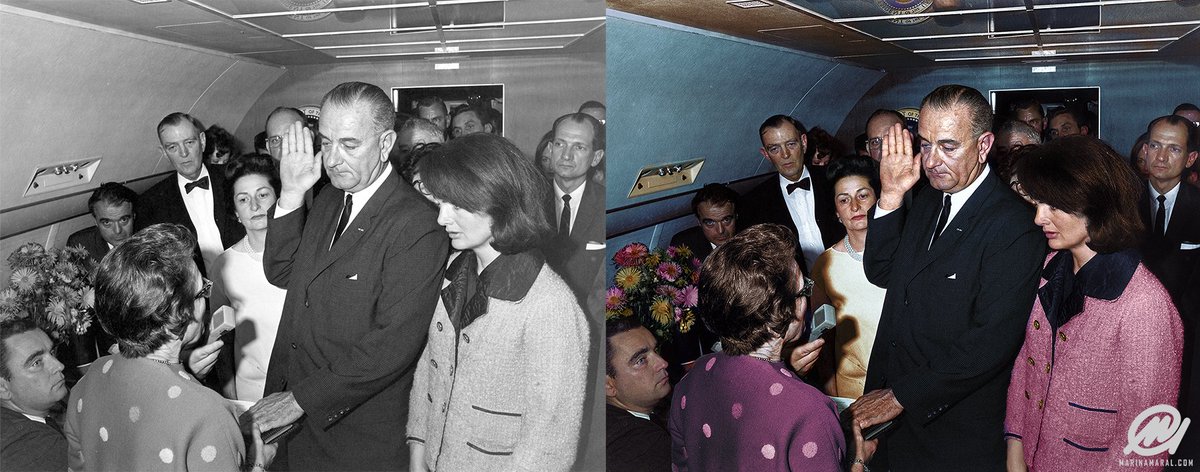
(The unlaundered suit was donated to the National Archives and Records Administration in 1964 and, under the terms of an agreement with her daughter Caroline Kennedy, will not be placed on public display until 2103)
Jackie took an active role in planning her husband's state funeral. She requested a closed casket, overruling the wishes of her brother-in-law, Robert. The funeral service was held at the Cathedral of St. Matthew the Apostle in Washington D.C. 

Jacqueline led the procession on foot and lit the eternal flame—created at her request—at the gravesite.
Lady Jeanne Campbell reported back to The London Evening Standard: "Jacqueline Kennedy has given the American people one thing they have always lacked: Majesty."
Jackie and her children remained in the White House for two weeks following the assassination.
At her request, Johnson renamed the Florida space center the John F. Kennedy Space Center.
At her request, Johnson renamed the Florida space center the John F. Kennedy Space Center.
In the following years, Jackie attended selected memorial dedications to her late husband. She also oversaw the establishment of the John F. Kennedy Presidential Library and Museum, which is the repository for official papers of the Kennedy Administration.
After Robert Kennedy's death, Jackie reportedly suffered a relapse of the depression she had suffered in the days following her husband's assassination nearly five years prior. 

She came to fear for her life and those of her children, saying: "If they're killing Kennedys, then my children are targets... I want to get out of this country". 

On October 20, 1968, Kennedy married her long-time friend Aristotle Onassis, a wealthy Greek shipping magnate who was able to provide the privacy and security she sought for herself and her children. 

She took the legal name Jacqueline Onassis and consequently lost her right to Secret Service protection.
Aristotle Onassis' health deteriorated rapidly following the death of his son in a plane crash. He died of respiratory failure at age 69 in Paris on March 15, 1975.
Aristotle Onassis' health deteriorated rapidly following the death of his son in a plane crash. He died of respiratory failure at age 69 in Paris on March 15, 1975.
After the death of her second husband, Jackie returned permanently to the US.
In 1975, she became a consulting editor at Viking Press, a position that she held for two years.
In 1975, she became a consulting editor at Viking Press, a position that she held for two years.

Following her resignation from Viking Press, Jackie was hired by Doubleday. Among the books she edited for the company are Larry Gonick's The Cartoon History of the Universe, the English translation of the three volumes of Naghib Mahfuz's Cairo Trilogy (with Martha Levin). 

Jackie also participated in cultural and architectural preservation. In the 1970s, she led a historic preservation campaign to save from demolition and renovate Grand Central Terminal in New York. A plaque inside the terminal acknowledges her prominent role in its preservation. 

In the 1980s, she was a major figure in protests against a planned skyscraper at Columbus Circle that would have cast large shadows on Central Park. The project was canceled.
In November 1993, Jackie was thrown from her horse while participating in a fox hunt in Middleburg, Virginia, and was taken to the hospital to be examined. A swollen lymph node was discovered in her groin, which was initially diagnosed by the doctor to be caused by an infection.
The fall from the horse contributed to her deteriorating health over the next six months. In December, Onassis developed new symptoms, including a stomach ache and swollen lymph nodes in her neck, and was diagnosed with Non-Hodgkin lymphoma. 

She began chemotherapy in January 1994 and publicly announced the diagnosis when she stated that the initial prognosis was good. By March, cancer had spread to her spinal cord and brain, and by May to her liver.
The following night at 10:15 p.m., Jackie died in her sleep at age 64.
John F. Kennedy, Jr. announced his mother's death to the press, stating she had been "surrounded by her friends and her family and her books, and the people and the things that she loved."
John F. Kennedy, Jr. announced his mother's death to the press, stating she had been "surrounded by her friends and her family and her books, and the people and the things that she loved."

On May 23, 1994, her funeral Mass was held a few blocks away from her apartment at the Church of St. Ignatius Loyola.
She was interred at Arlington National Cemetery in Arlington, Virginia, alongside President Kennedy, their son Patrick, and their stillborn daughter Arabella.
She was interred at Arlington National Cemetery in Arlington, Virginia, alongside President Kennedy, their son Patrick, and their stillborn daughter Arabella.
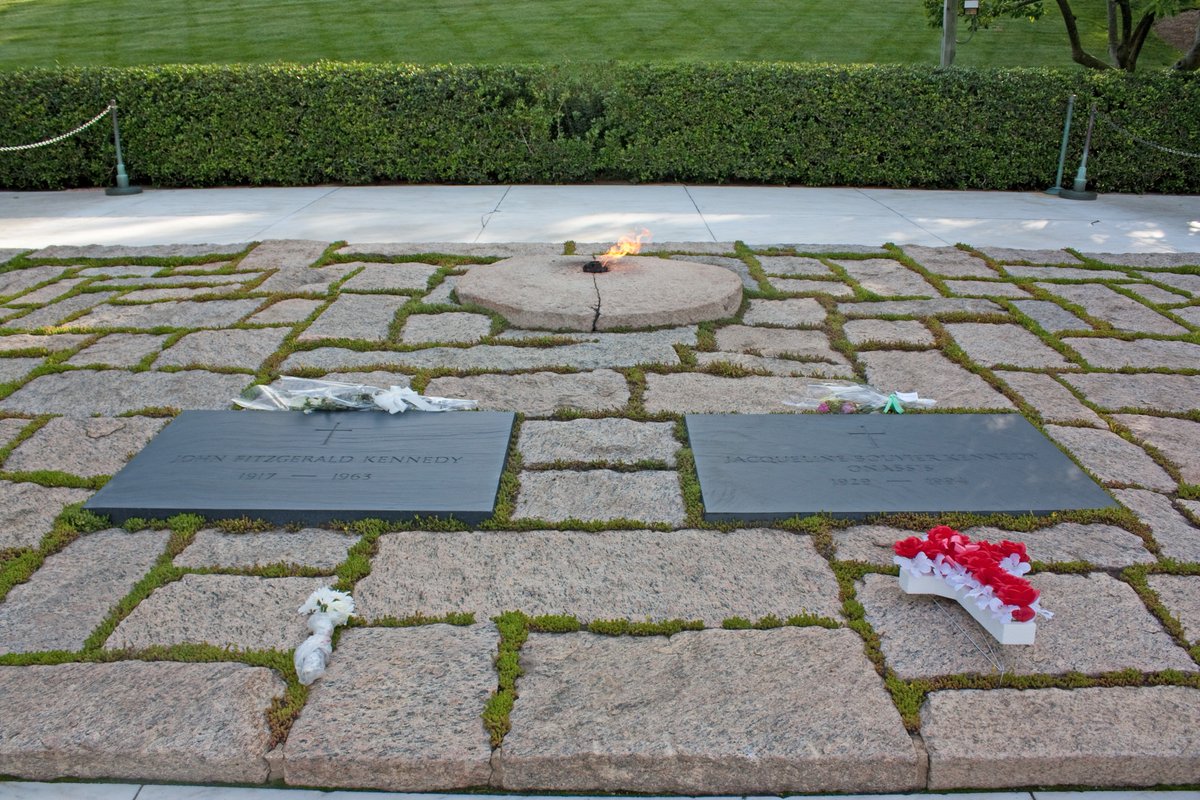
Jacqueline Kennedy remains one of the most popular First Ladies. She was featured 27 times on the annual Gallup list of the top 10 most admired people of the second half of the 20th century. This number is higher than that of any U.S. President.
*Done*
• • •
Missing some Tweet in this thread? You can try to
force a refresh




